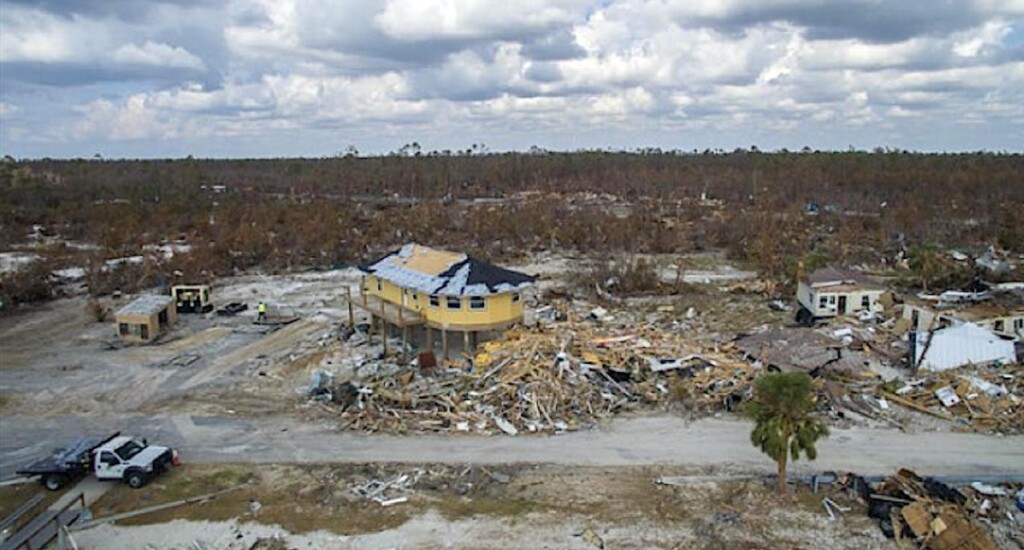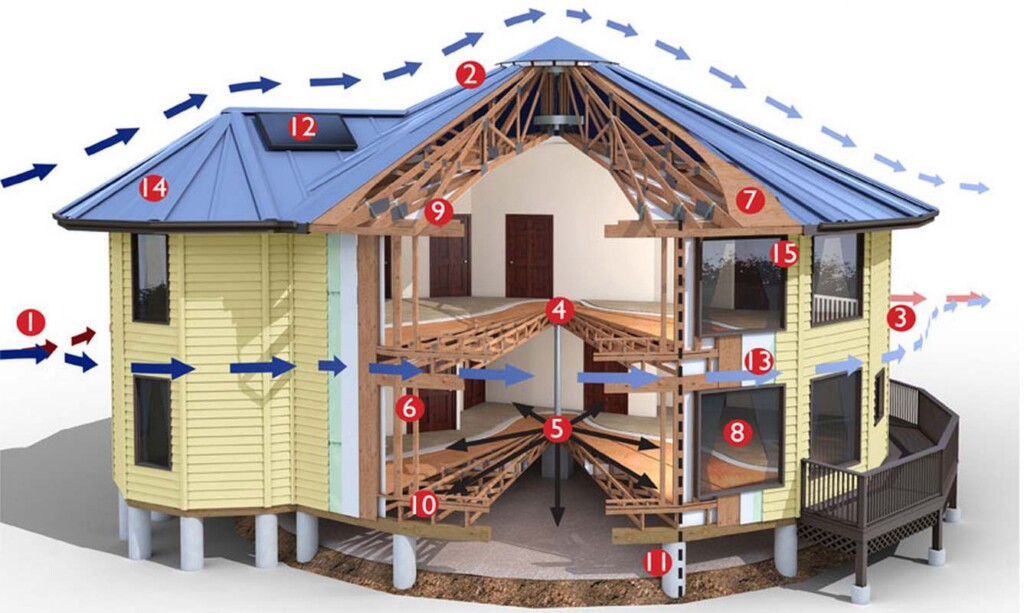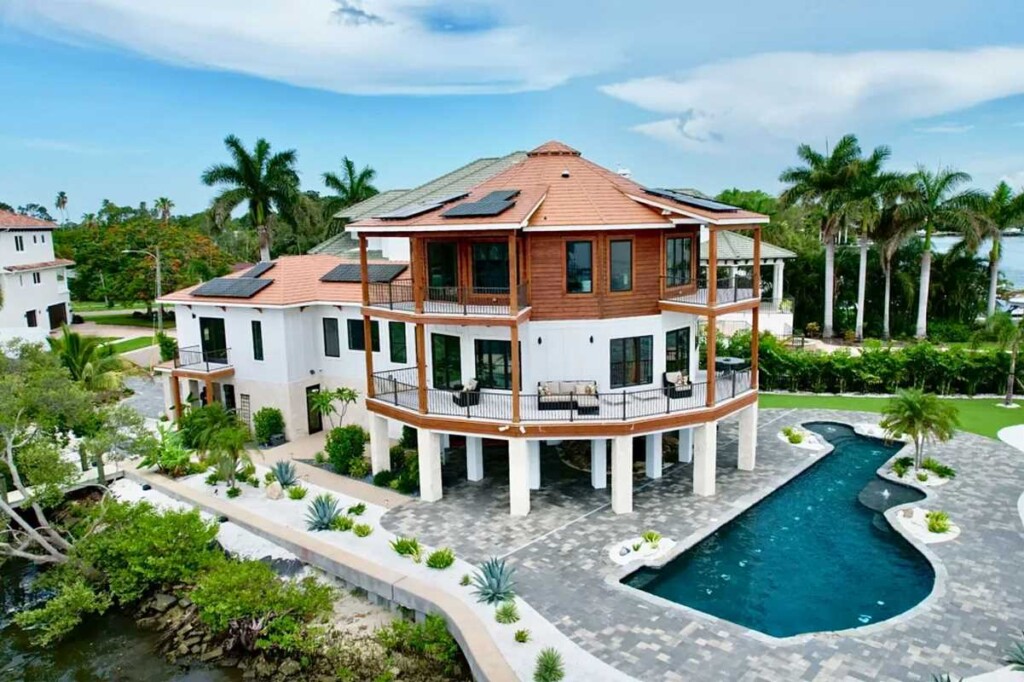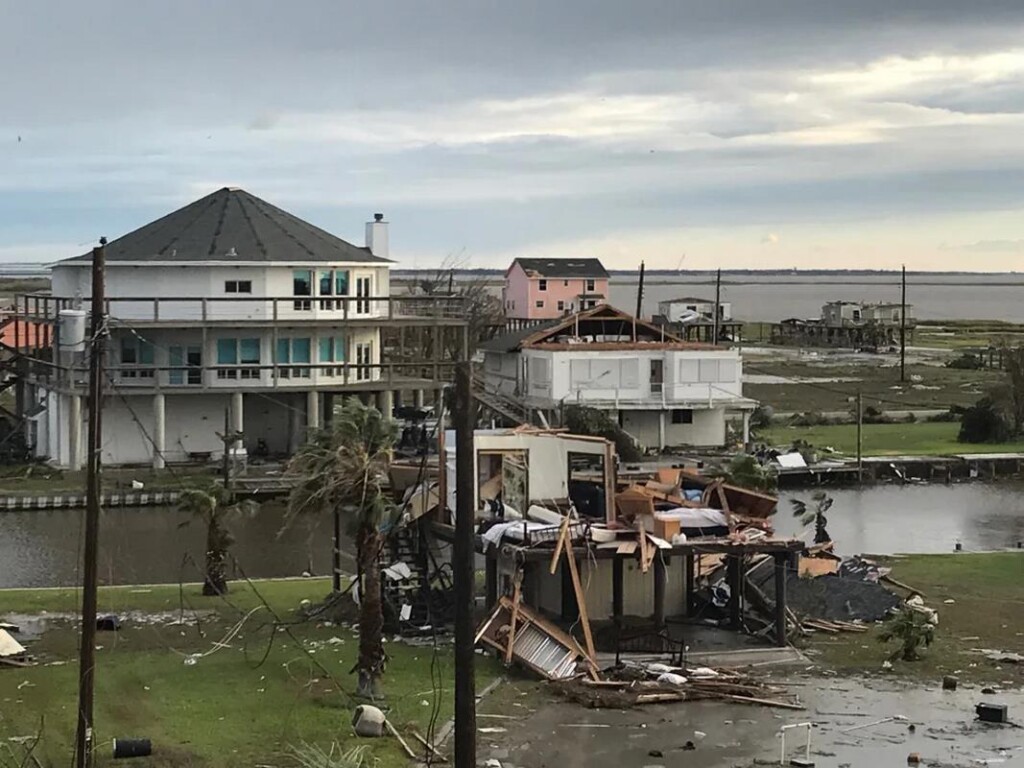
This is important because it shows us that we can engineer large robust structures able to stand up to a hurricane. This alone means we can massively rezone a deep waterfront strip of land along our coasts allowing a build quality not otherwise used.
Better yet, municipalities need to take on the pile driving business as a component of providing services. with plans in hand, they come in to provide water sewage and power access along with foundation piles.
wind proofing the outside structure is well understood and a void under such a building puts it out of harms way for a storm surge.
Our at risk coastal regions are already well documented and building has been haphazard. Sort of like Haiti. We clearly can do better and must. The easiest fix would be a federal program to provide insurance cover to the industry based on meeting these building codes.
A much better solution than just banning all building.
Thousands of Circular Homes Are Surviving Hurricanes Across the US Thanks to North Carolina Company
By Andy Corbley
-Nov 14, 2024



By Andy Corbley
-Nov 14, 2024
Deltec home survives when others did not during Hurricane Michael – Instagram video @DeltecHomes
When Hurricane Milton recently smashed into Florida’s Crystal River, a peculiar house stood firm even while a neighbor’s was heavily damaged by the powerful winds.
Owned by Gene Tener, it is one of 3,000 along the Gulf and Atlantic coasts of the US built by Deltec Homes, which use prefabricated parts to build hurricane-resistant homes.
Utilizing basic principles of aerodynamics, Deltec’s homes are cylindrical and sit on stilts that reach deep into the bedrock below. Coupled with a conical roof, it means there is no surface where the wind can gain enough purchase to push the structure down.
Inside, roof and floor trusses span the building like spokes on a bicycle wheel, radiating energy out across the whole skeleton rather than letting it build up on a fixed point. Deltec’s homes are designed to survive winds of 190 mph, higher than category 5, and just 30 mph below the strongest storm ever recorded in the Northern Hemisphere.
Mr. Tener’s home has survived Hurricanes like Idalia, Milton, and Debby, and while it cost him more than twice as much as a normal home in his area, it meant he saved the necessity to pay $12,000 in flood insurance this year—and who knows how much in future years.
Deltec’s homes can go from a low of $600,000 to over $2 million depending on the geography of the site, the size of the desired home, and potential additions like porches and decks.

Credit: Deltec Homes
“We started to ask ourselves the question: What would we have to do to design the home of the future?” Deltec President Steve Linton told CNN. “Because whatever we’re building today, we obviously want it to be around for hundreds of years.”
If climate change is in fact making storms more powerful more often, then overtime, millions of homes will be exposed to the dangers of wind and flooding having been built to withstand a class of hurricane that isn’t the norm any longer.
To wit, a data analytics firm Core Logic found that “over 32.7 million residential properties, with a total reconstruction cost value of $10.8 trillion, are at moderate or greater risk of hurricane wind damage,” and that “approximately 7.7 million properties, with a reconstruction cost value of $2.3 trillion, are at risk of storm surge flooding.”
OTHER HURRICANE RESISTANT HOMES: This Hurricane-Proof Florida Development Easily Endured Helene, Ian, and Idalia–Proving Climate Designs Work
Deltec’s homes boast a 99.9% survival rate against hurricanes, and while it’s not unheard of for a Deltec home to lose shingles or have a failure in their deeply set hurricane-grade windows, major structural damage is almost unheard of.

A Deltec home in Tampa Bay – Credit: Deltec
Deltec will work with a homeowner to come up with a design that suits them, and the process of building the house will take around a year for prefabrication and assembly, plus another 8 months for the initial design and prefabrication.

A Deltec home (left) stands undamaged beside a less fortunate neighbor in Rockport, Texas following Hurricane Harvey in 2017 – credit, Deltec, supplied
Linton told CNN that Deltec homes manufactured before the 1980s weren’t specialized for storm protection, but were circular merely as a way of offering a panoramic view of ocean scenery.
“Before (then), there wasn’t a particular emphasis on it until we started to see the results of Hurricane Hugo and Andrew (in 1989 and 1992, respectively), which were kind of the epoch moments, where it was like, ‘Huh, look at how much better a Deltec is doing than a neighboring home,’” Linton said.
No comments:
Post a Comment